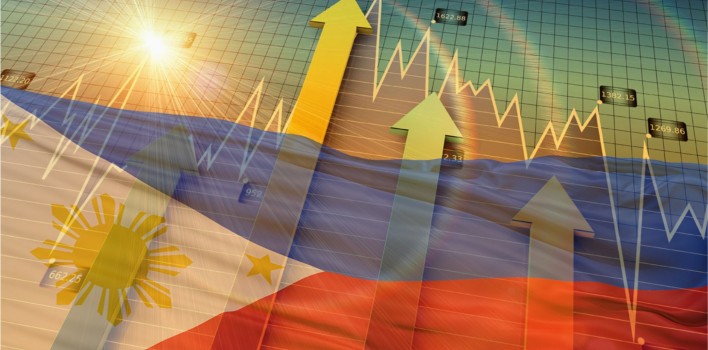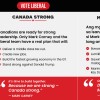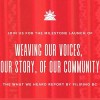PH ECONOMY STILL AMONG ASIA’S BEST—NEDA
Economic performance and outlook: PH ECONOMY STILL AMONG ASIA’S BEST—NEDA
Dahong Pilipino revisits the milestones in the Philippine economy for the year 2015. To offer insights on the country’s economic performance, DP collated the views of economists and international banking experts on various issues including the country’s macroeconomic situation, trade performance , domestic consumption, and investments. For additional perspective, DP gathered the forecasts of credit rating agencies on the economic outlook for 2016.
Despite the uncertainties of the global economy, the numerous domestic challenges, and the dire effects of natural disasters, the Philippines has transitioned into one of the most vibrant economies in Asia the past years. This is how Socioeconomic Development Secretary Arsenio Balisacan summed up the performance of the Philippine economy during the National Economic and Development Agency (Neda) yearend press conference.
2015 Performance

For 2015, Balisacan noted that the country was so far growing at an average of 5.6 percent for the first nine months of the year, as measured by the gross domestic product (GDP), but expected a 6.0-percent growth in the last quarter due to strong domestic demand, more jobs and more public and private investments. “This puts the Philippines as one of the fastest-growing major economies in Asia, just after India, China and Vietnam,” Balisacan said.
“Our year-to-date performance reflects a steadily growing economy, and we are very optimistic that the Philippine economy will grow at 6.0 percent for full-year 2015,” he added.
Balisacan foresees continued strengthening of the industry and manufacturing sectors, as gleaned from the previous eight quarters from the second half of 2012 until 2014, when growth of the industry sector outpaced the growth of the services sector. This trend, he said, is consistent with the Aquino administration`s strategy to promote the resurgence of industry and the manufacturing subsector.
“But the services sector, particularly the IT-Business Process Management, also remained robust. The tourism subsector has also recovered from the Bohol and Cebu earthquakes and Typhoon Yolanda in 2013,” Balisacan said.
Sustaining high-growth trend
Turning to the 2016 and medium-term forecast, Balisacan foresees that the growth targets will stay on track, as Philippine economic managers accelerate reform initiatives in pursuit of the inclusive development aspired for by the Philippine Development Plan. Balisacan underscored that the country’s economy has been growing at an annual average of 6.2 beginning in 2010, when the Aquino administration took over, and sees no major risk factor that could drastically slow the economy down.
“This has been our highest five-year average growth since the mid-70’s. With the recent performance of our economy for three quarters of this year, we are confident that we shall see this high-growth pattern continue and even improve throughout next year and the succeeding administrations, given the reforms and long-term investments in infrastructure and human capital, which we continue to pursue,” he said.
Financial managers’ forecast
Meanwhile, the International Monetary Fund (IMF), the central institution which stabilizes the monetary systems of the world, lowered the economic growth forecasts for the Philippines in 2015 and 2016 amid the country’s weaker than expected gross domestic product (GDP) due to continued weak global demand.
Shanaka Jayanath Peiris, IMF representative, said the multilateral lender in its October 2015 World Economic Outlook (WEO) slashed the country’s GDP growth forecast to six percent instead of 6.2 percent this year and to 6.3 percent instead of 6.5 percent next year.
Peiris noted several factors that would boost the 2016 economy. These include the take off of big-ticket public private partnership (PPP) projects; improved government spending as well as election-related spending.
Standard & Poor, an international credit rating agency, also slashed its 2015 and 2016 forecasts for the Philippines amid economic slowdown in China and U.S. recovery.
Better-than-expected growth, spike in government spending
But despite the lower growth forecast, the country’s economic growth would be faster than Standard & Poor, an international credit rating agency’s forecast growth of 4.9% for 2015 and 5.1% for 2016 for the Association of Southeast Asian Nations (ASEAN-4) which includes the Philippines, Indonesia, Malaysia, and Thailand, Rappler.com reported.
“Finally, the ASEAN-4 economies are also seeing subpar growth for a variety of reasons. Indonesia, the largest of this group, has seen growth slide closer to 5% from an average of about 6% in the post-financial crisis period. Growth in Thailand has recovered from the 2014 coup but remains subdued,” S&P added.
Other economic managers have pegged a GDP growth of between seven and eight percent for the Philippines. For the first quarter of 2016 in particular, public spending will likely receive a strong boost as the government announced that it would front load up to 60 percent of next year’s budget to this period, experts noted.
The Asian Development Bank likewise sees a mild trim in economic growth for 2015 before Philippine economy will bounce back in 2016, largely due to a pickup in government spending and a bounce back in exports.
ADB, in an update of its flagship annual economic publication, Asian Development Outlook 2015, projected a GDP growth of six percent for 2015, down from a forecast of 6.4% in March. For 2016, growth will rebound to 6.3%, unchanged from ADB’s earlier projection.
“After a slow start to the year we are now seeing a pickup in fiscal spending which combined with spending linked to the May 2016 elections will help lift the domestic economy,” said Richard Bolt, ADB country director for the Philippines. “Recently enacted reforms to improve competitiveness and to attract investment will play a key role in future growth, as will continued reforms and investments in infrastructure and other public goods,” he added.
The Philippine economy, analysts believe, is in a strong position with many factors in its favour – positive demographics and growing bank penetration to improving revenue collection and public governance. A peaceful and credible transfer of power in 2016 will also ensure growth.
After too long spent as the slowest-growing economy in Southeast Asia, the Philippines can finally emerge as one of the most vibrant economies in the world.
–
 Canada
Canada











